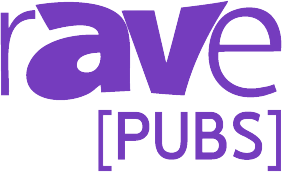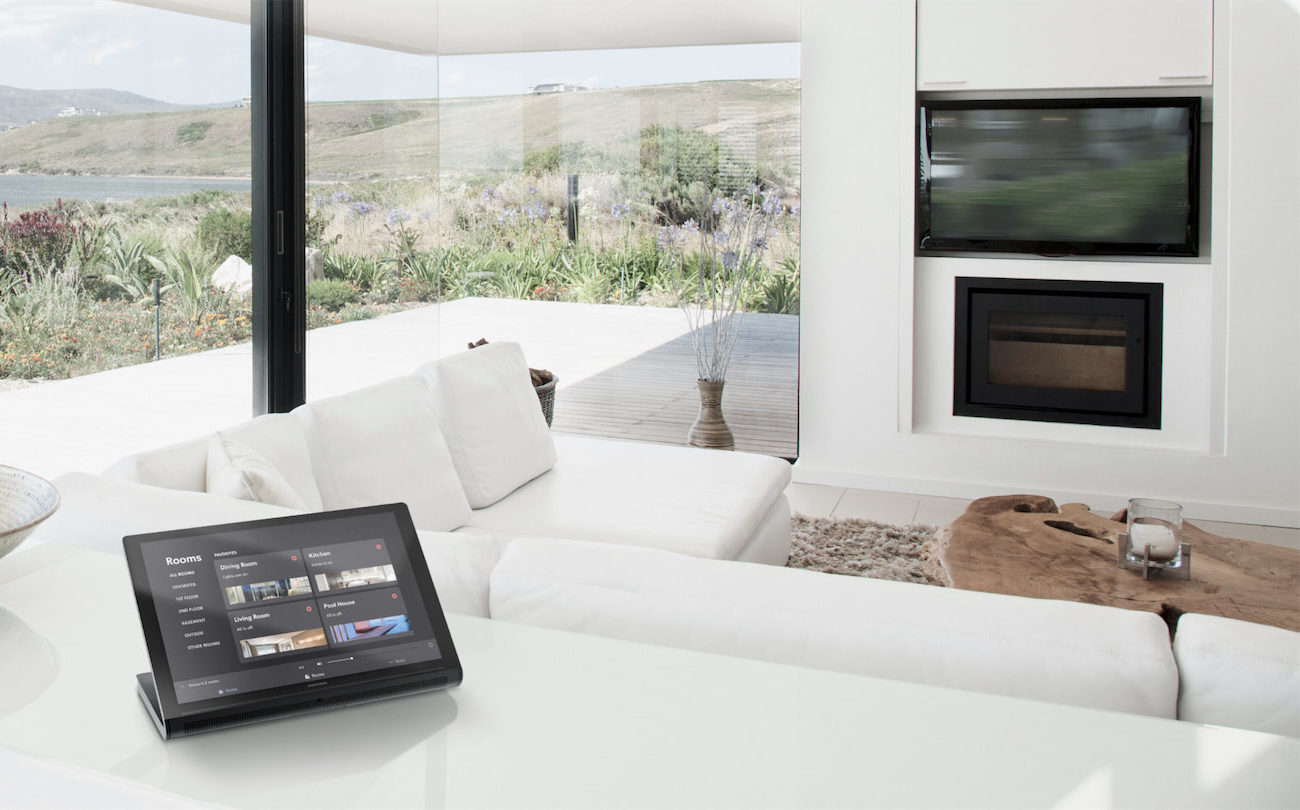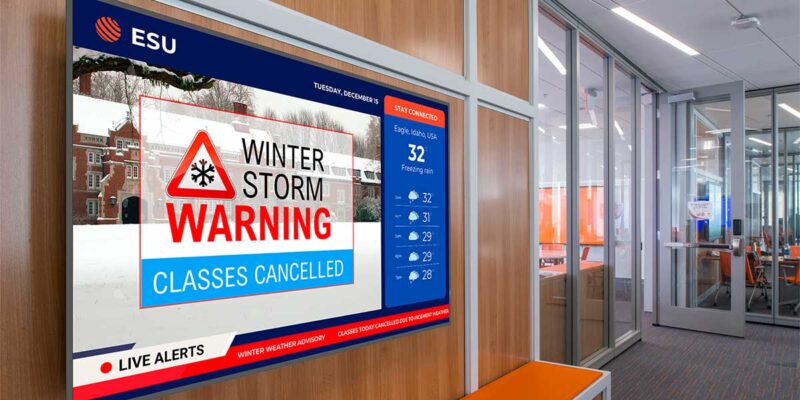Kayye’s Krystal Ball: 2022 Edition

Welcome to my 22nd annual Kayye’s Krystal Ball! I can’t believe I have written this article 22 times. I am beyond humbled by how many of you read this; last year, it was viewed by over 90,000 #AVtweeps. #LOVE ❣️
The bottom line is I love writing this article. It keeps me curious and humble. When I start writing it each year, I start with a blank slate. No notes, no outline and no preconceived notions of what I will be including. And, since there are no sponsors, I can write whatever I damn well please.
Have I pissed off companies with what I have written? Yes. Have I been wrong? Yes. Have I been threatened to be sued? Yep. Have I actually been sued? Yes, twice; I won both times. Do I have insider information? Yes. My clients often tell me what they are doing two years ahead of actual launch. But, as frustrating as this is, I am bound by both loyalty and ethics to not include it. However, the bottom line is this: I am wowed by the number of you who read this, contact me to agree, disagree, ponder, etc. I’d like to thank you.
Writing this requires me to stop and research anything new, evaluate the potential impact it will have and then articulate it in a way that matters to readers. My Kayye’s Krystal Ball piece is an annual article where I not only tell you what I think is going to happen in the AV, UCC and Digital Signage markets for the upcoming year, but I also look back and review the previous year’s predictions — sort of a scorecard of accuracy, if you will. 2021 seemed a little too familiar. I am not sure I can honestly say I remember a transition from 2020 to 2021; it’s almost like two years melded into one. It sucked. In early 2021, I did write this same piece in an effort to predict what would happen and, if you’d like to read it before reading on, feel free to do that: https://www.ravepubs.com/kayyes-krystal-ball-2021-edition/. I will start this year’s article with a review of 2021, too!
Author’s note: Kayye’s 2021 Krystal Ball Predictions was delivered as an Almo Pro A/V exclusive webinar earlier this week. So, if you prefer to listen/watch instead of reading, go here— it includes a slide deck along with a recording of Gary’s live delivery of the webinar.
My 2021 Predictions: A Review
First up was “collaboration software is the killer app of 2021.” ✅ Bluescape found distribution. Microsoft Teams is the top collaboration software being touted by ProAV professionals. Startups like Alleo are about to dominate the back-to-work plans of anyone in AV serving the corporate AV market (that will be filled with hybrid workers). I am excited to see our hardware-filled sales experts turning their attention to software tools that can support the burgeoning segment of services for our clients.
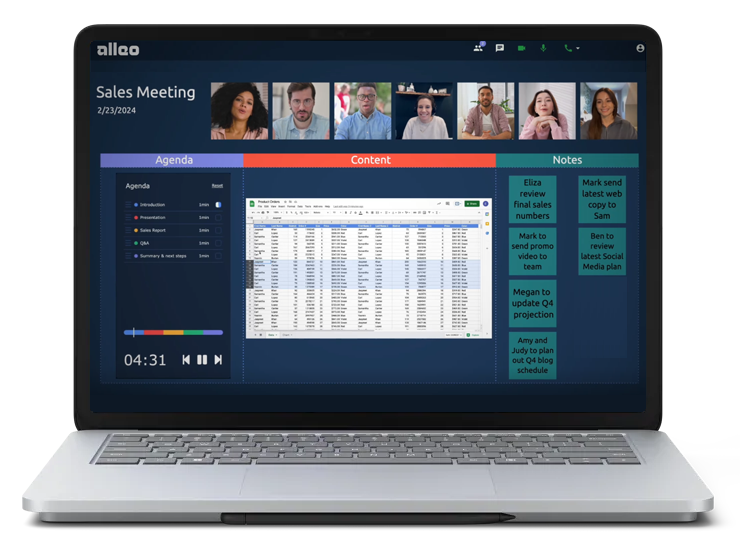
Next, I predicted that no one was going to say, “Hey, we need more audio conferencing.” (Aka: video everywhere and the death of audio conferencing.) ✅ I’ll give myself a win here, simply because videoconferencing products are outselling exclusively audio ones at a rate of 3:1. But the truth is, our clients in higher-ed and K-12 haven’t really returned to the office yet. What I was specifically referencing was in meeting rooms and the likelihood that video would be integrated everywhere — even outside the four-walled rooms. And, everyone in the videoconferencing market is having record sales. Everyone. Audio-only … not so much, unless the manufacturer is building integrator-based or system-based solutions (aka Shure, Sennheiser and Jabra). Finally, companies that sell UCC-based cameras are dominating attention — AVer, Huddly, Jabra PanaCast, Vaddio, Poly, Logitech and even MXL. We are solidly heading down the path of a video-everywhere future.

Next order of business: I predicted 2021 would see “the invasion of UCC bars and the computer-less UCC rooms.” ✅ Not only do we now have Android-based MS Teams and Zoom Rooms, you no longer need an in-room computer to build a Zoom Room or a Teams Room; or a Google Meet or Pexip Room either. Poly and Logitech, along with Bose, AVer, Jabra, Crestron and a handful of other companies entered the speaker-bar mic-array market once only dominated by Nureva. The UCC-based meeting room market is poised to be a $150 billion market by the end of 2024, no doubt. And, we’ll see meeting rooms without walls — more on that in my 2022 predictions so, keep reading!
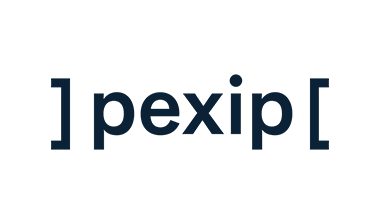
Speaking of Pexip, I predicted that “2021 would be the YEAR OF PEXIP.” ✅ I don’t even think I need to even explain how right I was here. Pexip (the company) is on nearly everyone’s acquisition list; it has what every AV company has been asking for forever: UCC interoperability.
My next prediction was wrong — I saw 2021 as “the year of the emergence of the UCC cart.” ❌ I will re-predict this in 2022, though. I think the only reason why I was wrong here is that companies just didn’t return to the office. But the demand for a portable, transportable, wireless UCC room is through the roof. I was wrong for 2021 but, I will be right in 2022. To date, the only real solution here is the LG One:QuickFlex. And, if companies like Avocor and Sharp/NEC don’t emulate this, they could find themselves playing catch-up in 2023.

Modern interior of elevator lobby.
I told my readers that in 2021 “we’d finally see displays with cameras built into the center of displays.” ❌ Even though one company did launch this in 2021 — Jupiter has a camera embedded in its Zavus LED displays — I will still say I was wrong here. I thought that by now we’d see a plethora of desktop companies add cameras integrated into the LCDs driving their flat panels. But, nope! Hey, LG, Samsung, Sony — build this, please!
By the way, if you’d like to see the Jupiter display with a camera build into the center of it, I did shoot a video demo of it in July 2021 and you can watch it below:
My next one was quite easy, as AV companies were the reason many people were able to work from home so easily; I knew it was natural that cybersecurity threats would increase, considering the support required to help millions of at-home workers. So, I predicted that 2021 would be the year that we saw “the rise of AV integrators adding cybersecurity services.” ✅ Not only was I right here, but one company is benefiting the most from our needs is Palo Alto Networks. If you haven’t engaged with these folks yet, you will.

I couldn’t have been more wrong with my next one. I actually predicted that 2021 would be “the year of dvLEDs.” Um, no. ❌. In fact, every LED company across the globe but two had a down year. (Not as down as 2020 but, still down. Nowhere near what they were doing in 2019.) The dvLED market is poised for a breakout year but it can’t happen until things get back to “normal.” For example, the plethora of all-in-one LEDs are going to, no doubt, start taking market share away from projector and LCD companies. However, we gotta be in the room to need the tech in the room. There is still a majority of office workers working from home, not an office. So, although we saw an increase of LEDs in the digital signage market, most of that was on the outdoor segment of LED, not the indoor meeting room or corporate lobby applications. But, 2022 … maybe, just maybe!
My next one was pretty easy to predict as 2020 had already seen the digital signage market allow retail to “re-open” during the pandemic thanks to both its native messaging and wayfinding capabilities — something every digital signage network does. Therefore, when I predicted that “2021 will be the biggest year in digital signage history,” it had already begun. Since then, nearly every signage company added a virtual concierge feature; some even added temp tablets. So, ✅.

Peerless AV KIP522
Next: Last year, I said “the market for room signs will explode in 2021.” ❌ Problem is, we still aren’t open. We aren’t back inside buildings, so we aren’t installing them. But! 2022 will be the year … I think …
So, did “voice control make its debut in ProAV?” ✅? Yes and no. We still aren’t seeing mainstream control companies natively integrating voice but we are seeing integrators doing it with Amazon Alexa and Josh.ai. Although Josh.ai was designed for home applications, it’s more than capable of managing any and all ProAV installs. If you aren’t already using Josh.ai, you will be.
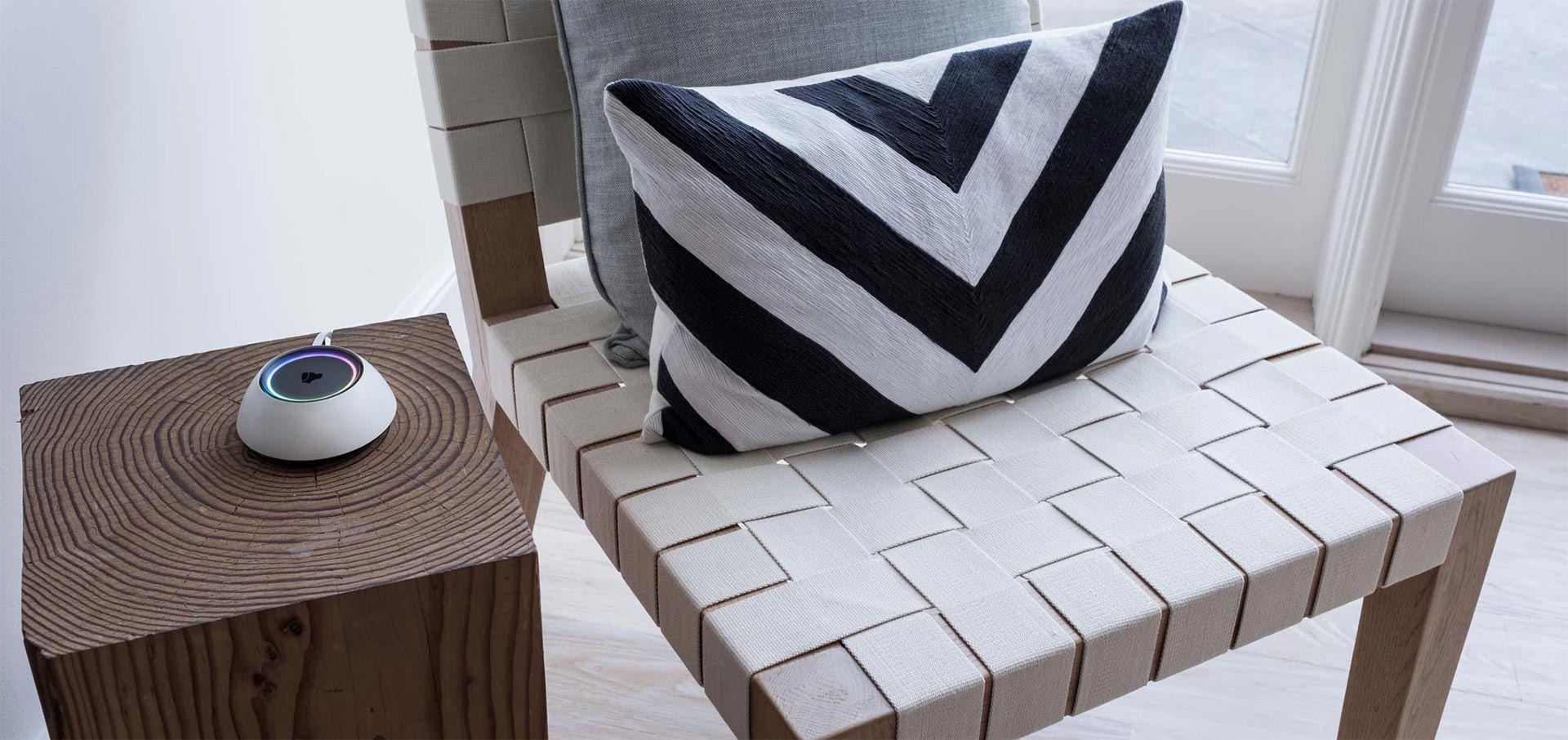
Josh.ai Josh Micro
With so many remote students, employees and managers are still planning to work from home in 2022 (even though it looked like we’d start emerging from the pandemic by summer 2021), the writing was on the wall when I suggested that “every system will be integrated with streaming capabilities.” AI even suggested some leading products out there that could easily be added to any room — like Extron’s SMP, the Matrox MAEVEX, the Blackmagic Web Presenter or the Magewell Ultra Stream. ✅ Not only were these added in record numbers, but we’ve seen a whole new set of companies enter the AV space with alternative streaming solutions that both leverage existing UCC platforms but you can now add this to any Zoom, Teams, Meet or Pexip Room as all the cloud-based UCC platforms added third-party output streams to they meeting features. So, this is even easier in 2022 than it was in 2021. But, for high-quality streaming, the hardware-based solutions still rule as you can even output in native 4K if you wanted to. And, at best, the UCC platforms handle only 720p.
In my “here’s what will happen with the __________ market section,” I predicted:
- K-12: We will see at least a 25% increase in spending/buying from K-12 globally. ✅
- Higher Education: This will see an 8-9% increase in spending in and around higher ed. ✅
- Corporate: We will not see significant traction in this area with hardware spending until April. ✅
- Hospitality: All indications are that hotels and conferences will not start to rebook a significant amount of business travel until at least October. ❌
- Healthcare: We will see a +45-50% increase in spending here for 2021. ❌
- Government: We will see an increase of over 20% over 2020. ✅
- House of Worship: We will see growth in that market in the range of 15%. ✅
- Live Events: I projected we will have more than 50% of our planned events back on track! I also thought that revenue in live events for 2021 will be up 20-25% in 2021. ❌
I nailed my next projection when I said “the merger mania will continue in 2021.” Just to name a few: ✅
- Exertis bought Almo Pro A/V.
- Snap One bought Access Networks.
- Trox and Tierney Merged.
- Diversified bought HB Communications.
- AVI-SPL purchased SKC.
- Questex bought the DSE Show out of Bankruptcy.
- Kramer was purchased by a private equity firm called Fortissimo.
- VITEC acquired Exterity.
- Biamp bought Neets.
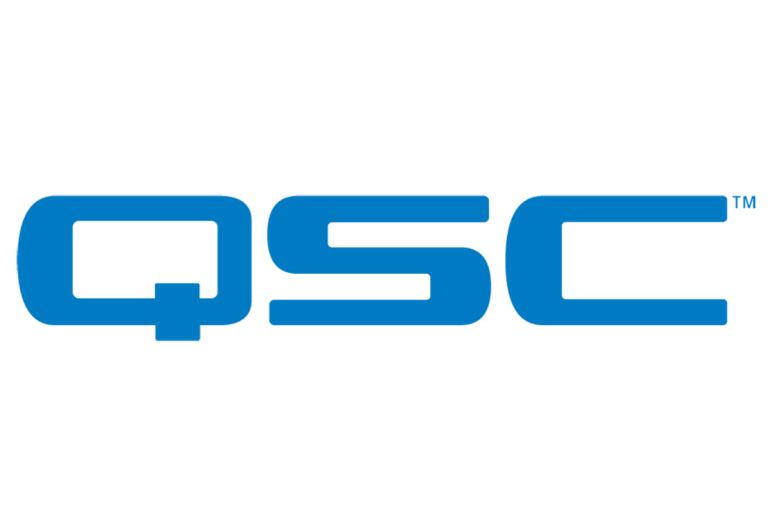
Next, I turned my attention to an up-and-coming control company in the form of QSC. and I predicted it would become the number 3 control system company, globally, in 2021. Well, not only has it accomplished this, leap-frogging Kramer in the process but, the company also took 2021 as an opportunity to add video to its lineup. ✅
In a bold prediction (that’s not panned out, so far), I predicted Epson would debut a new technology. I was right as Epson debuted the GoBoard Collaboration System of software and hardware products. Currently aimed exclusively at schools, look for it to come to the meeting room market in 2022.
In my final prediction for 2021, I fully expected that, in light of a no-spectator policy, the Olympics would be canceled. But, they held them without a local crowd to watch anything. Now, with the lowest ratings in over 30 years, the primetime audience was half that of the 2012 London Olympics. But, in more positive news, Panasonic did take the opportunity to capture a ton of 8K content that we should see trickling out at trade shows when they return in 2022!

What Will Happen in 2022? My Predictions:
Right off the bat, I want to mention that the biggest factor that will hamper industry-wide growth will be supply chain issues. We will NOT see record growth or anything close to what we had even in 2019. 2022 will likely look more like 2021 in sales. This is going to be a big, big, big, big deal. In fact, manufacturers are telling me that this will not be solved in 2022 and will move well into 2023. Because of this, the recovery of the economy — even if that did happen in 2022 — will be nullified in AV, digital signage and the UCC markets because even you could sell it, you won’t be able to get it. We will see allocation issues with product all year long.
That said, not all is doom and gloom. In fact, many of this year’s predictions will not be growth-oriented. Instead, I will show you where the positive opportunities are for you to refocus your business models, consider expanding or even enter totally new markets. Of course, I will still have some ramblings about the traditional AV, signage and UCC markets where it makes sense. But, I feel as though my role this year is to positively push you in the right direction so you will see growth no matter how hampered you are by supply!
This means that you will see some of my predictions as a bit of a moving target. For example, as you will see below, one of my predictions includes the incredible opportunity you have to add system-based mic arrays to nearly every room you’ve ever installed or sold since you’ve been in the industry — retrofitting old rooms with new tech to accommodate hybrid attendees. In this case, you’ll need to be flexible — if you spec Nureva, you might have to also spec clearly defined alternatives that can be mixed and matched (Nureva might not be able to fulfill each and every order in the time frame you want.) So, adding Shure, Sennheiser and ClearOne to the mix is a good idea in this case. My point is, BE FLEXIBLE. Don’t spec any single-source-supplier products unless nothing else exists.
Companies to Watch for in 2022:
Here’s a list of companies you SHOULD be a dealer for — with products you should be selling. In other words, if you aren’t already engaged with these companies, get engaged. Most of these will likely not experience supply chain issues (they have control of their own manufacturing destiny). Or, they have new tech that you should be aware of.
- AVer: This company is THE up-and-coming UCC camera company.
- MXL: Makes the best affordable PoE in-room PTZ cameras on the planet.
- Audio-Technica: This company has entered the UCC room-based Beamforming Ceiling Array Microphone market.
- Alleo: This cloud-based collaboration software is “da bomb” and I love it (oh, and VERY profitable).
- Yamaha: Yes, the company actually makes a great speaker-bar mic array.
- Shure’s best-kept-secret: A lot of integrators sell Shure because of its handheld or lab mics, but the reason you should add it to your systems business is because of the Stem Audio product line.
- C2G: I’d add them to my lineup for the USBC Extenders — who isn’t trying to extend USB right now? Also, Extron also has a hybrid copper/fiber USBC lineup in the form of the USBC Pro Series — I use this one in an ad-hoc classroom application where I need to place a camera in the back of a room 2x per week. It’s here.
- INOGENI: I love the CAM300.
- Konftel: This company is the new Polycom. I’d be selling the hell out of this stuff.
- T1V: Its hybrid classroom tech is the best in the industry. It is expensive, but it is THE BEST.
- X2O: This is BY FAR the best HyFlex classroom system on the planet. Again, it’s expensive, but if you want to build a HyFlex classroom from the ground up, properly, this is your only option.
- Leon Speakers: Need Speakers integrated (and customized) to match any display you install AND look like they belong in a museum? This is where you go.
- NETGEAR: Everything in AV, UCC and Digital Signage is moving to reside on the network. So, why wouldn’t you sell NETGEAR? The best part about it is that the team will design your AV-over-IP system for you — yes, for free. The company will do all the design work using any AV-over-IP platform or ecosystem you’d like to use.
- Pathway Innovations: Terrible name for a company; great name for a product. It has a product called eGlass that ANYONE who teaches using Zoom, Teams or Meet will buy! Anyone.
- Huddly: Its whiteboard camera (Huddly Canvas) is amazing!
- BlueJeans: Want to get into Telehealth? The BlueJeans TeleHealth system is the easiest entry point. And, this is a service product. No supply chain issues.
- Vaddio: Its ConferenceSHOT ePTZ camera is the best-kept secret in high-end UCC meeting room display-top cameras.
- Snap One: Its WattBoxx Power Conditioners are profitable and cloud-based.
- ARHT Media: It has an all-in-one holographic teleportation system called the HOLOPOD that is designed to be sold to C-suite executives — allows them to be keynote or event speakers without leaving their office but still appear in 3D.
- Vestel: The best-kept secret in the collaboration board market.
- Newline: Once relegated to schools as the alternative to smart technology, Newline has the best at-home interactive touch personal UCC display that’s shipping — so far. Unlike the DTEN model, it does more than Zoom. And, the forthcoming Google model from Avocor is designed for Meet.
- DisplayNote: Its Broadcast cloud-based software solution is cool as it does the opposite of the Barco ClickShare — it allows you to send content to each attendee rather than to the display at the front of the room!
Technology Shifts to Watch for in 2022:
There are four tech shifts that will likely define how we remember this year. We are on the cusp of change in our market where AV systems are being dumbed down (simple and designed with the minimum level of performance) rather than with a “build-this-room-to-accommodate-any-possible-use-case” mentality. This means we’ll see the continued decline in sales of things like document cameras (rarely used in rooms anymore), more reliance on third-party wireless meeting systems (leaders like Barco and Mersive will benefit big-time from this) and the continued rapid simplification of mics. This last one intrigues me the most.
The accelerated advancement in mic-array technology has been stunning to me. Just three years ago, adding mics to a classroom or a large meeting room to pick up all the attendees was expensive and difficult. Now, with products like Shure’s MXA and Nureva’s HDL, these companies created a reason to add mic tech to every space — with one simple cable connection and NO NEED for external control of it. With that in mind, here are four simple tech trends that could affect your business in 2022:
- dvLED: This is where our industry will get interesting in 2022. For years, we’ve been hearing LED is the “next” generation display tech for everything — ultimately displacing projection. That won’t happen in 2022, but the plethora of all-in-one LED systems, some as large as 200+ inches, will drive some major sales this year. In fact, any time you are specifying a classroom in a private university, a C-suite meeting space or a wow-factor projection system, you should consider LED. It’s more expensive, but you will see a lot of companies prefer the technology and are willing to pay for it. Some of the best I have seen recently are from LG (the best portable system on the market), Planar’s MicroLED, Sony (B- and C-series) and the Samsung indoor stuff. Absen, historically the most integrator-friendly company in LED, will be the most price competitive.
- Collaboration Software: We’ve been doing video collaboration for years. And, Zoom and everyone else in that market has provided some level of meeting equity throughout the pandemic. However, even if they don’t ask for it by name, nearly all customers need “Collaboration Software.” If you don’t know what that is, check out companies like Alleo and Bluescape. Get a free trial, and you will be addicted. Imagine having a Zoom or Teams meeting inside a collaboration (digital canvas) space where you share documents, videos, pics or anything else, and every person can see it all the same. Oh, and everyone can collaborate on it simultaneously. Plus, the experience is identical whether you are in your home, on the beach or in a physical meeting room. This is something that every integrator should be specifying and selling.
- More Cameras: We need to stop putting only one camera in a room. We need at least two. Also, we need to give far-side meeting participants the ability to switch views (this is a setting inside Zoom, Teams, Meet, etc. that is mostly disabled by default). Gone are the days with one head-of-the-room location. We now need to have multiple cameras in spaces to make sure we accomplish the much-heralded meeting equity. With AI, most camera companies can automatically detect voices and movements from each speaker. This is what’s needed to make sure the far-side participant truly feels like they are in the room.
- Vertically Mounted Monitors: Along the same lines, meeting quite needs to be reflected inside he meeting room, too. So, in addition to adding more cameras for far-side participants, we need to add vertically-mounted (portrait) display along the side walls of meeting rooms so that those same far-side participants aren’t missed in the room – let them be seen, residing on these monitors, as if they are physically in the room. This will change the perception of both sides of a meeting — as local participants will feel like the remote participants are actually “there” and far-side participants will feel more represented inside the room.
Other 2022 Trends:
Esports
Both in 2020 and 2021, my most-attended webinars were about how to get into the esports market. Yep, esports. Not UCC, not digital signage. Esports. It makes sense. You may not believe this, but the video-gaming market makes more than four times the $ of the entire Hollywood movie market, annually. Just look at the data. In 2019, the last year movie theaters were relevant (pre-pandemic), movies grossed, globally, a little over $40 billion. In 2020, the video-gaming market was more than $170 billion.
Also, esports is the newest NCAA sport in college. In fact, over 30 schools have it as a Division 1 NCAA sport; over 200 colleges and universities have esports club teams. This is in the U.S. alone. Globally, esports is giant. In fact, in South Korea, the gaming industry is more than $18 billion annually. The country hosts a handful of esports tournaments that have a large global audience than the Super Bowl. This market is ready to explode, as proof, you only need to look at Microsoft’s acquisition of Activision for $68 billion earlier this year. In comparison, Disney bought all of the “Star Wars” franchise for only $4 billion. Oh, and they bought Marvel for $4.5 billion. So, a $68B buy shouldn’t go unnoticed.
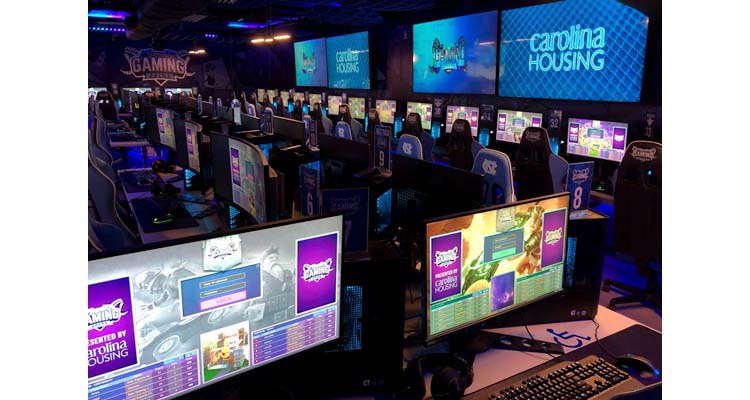
The esports market is filled with AV tech. In fact, each tournament includes separate AV Systems for the live and the online audience. Panasonic is leading the “hub” of esports with a switcher product called KAIROS — it’s used in more esports venues than any other. But, Sharp NEC, Samsung and LG are all over these venues. And, they’re nearly all AV-over-IP now. So, there’s that, too. Have you gotten into esports yet? 2022 could be your year to differentiate.
The Year of the Regional Show
You’re about to be inundated with regional events. In fact, one could argue it’s already happening with regional events from Legrand, Crestron and Sony in full swing. Almo Pro A/V can probably be attributed to starting the modern regional event craze but, in 2022, I know of at least 40 brands planning their own stand-alone regional events. This is being driven, in a large part, by the start and stop of national events. Nearly every show on the planet has moved more than once or has been canceled over the past 23 months. As much as we all want to “get back to normal,” the June InfoComm Show will likely only have 25,000 attendees — people are still nervous about being around large crowds. So, this is what drove Crestron’s decision to start its NEXT tour. I am certainly hopeful that national and international shows will restart and I, for one, will be at the ISE show in Barcelona in May and at InfoComm in Las Vegas in June — I hope to see you all there. But, to be frank, I know many of you will stay home and drive this regional trend in 2022.
Resimercial AV
Jason McGraw coined this term a few years ago; he’s currently running the CEDIA (high-end smart home) Expo but was formerly the InfoComm Show Guy (VP, actually) for 25+ years. So, he’s qualified to make up the term. “Resimercial” describes a bidirectional trend where residential integrators are doing “light” commercial installs (think Zoom Rooms, digital signage, etc.). Vice versa, commercial integrators are being dragged into the home to solve all sorts of WFH (work-from-home) issues like connectivity, bandwidth, video quality, acoustics, etc. for the C-suite folks, who’ve decided they like working from the home office. In fact, InfoComm added some WFH stuff to its 2021 event, while CEDIA did the same to its annual show. Both will amp that up in 2022.
The truth is, you will find the HomeAV integrator encroaching on commercial ones at a much higher rate than the commercial AV integrator tackling the home. But, they should be. In reality, based on dozens of studies, it appears between 20-30% of the global workforce wants to work from home now. That will set up a totally new opportunity for us to offer pro services that cater to home offices. Better cameras, better mics, better acoustics, better lighting, better collaboration software, etc. All of it will grow in 2022!
Speaking of @Home
Our own Steph Beckett thought I should add the “mobile worker” trend into the mix. As you address the opportunities of WFH employees and sell them better stuff and add in services (yes, shouldn’t you be selling tech-support services to these people?), consider the fact that many of them (especially younger ones) will be working in a mobile life. That means they could join meetings from home, the local Starbucks or from Mexico on vacation. In the past, we considered these situations temporary but, as they become a more permanent fixture for our clients, shouldn’t we offer this as a service? Do we assume that the WFH or WFA (work from anywhere) employees are no longer clients of ours? They were when they were in the office so, why not when they’re working from their laptops, too? Why not consider “kitting” simple client-specific AV systems for mobile employees? Sell these kits already pre-configured (including with their Teams and Zoom accounts) to work from anywhere easily and safely (and securely)? I wouldn’t assume that 20-30% of our clients don’t need to be serviced because they are @Home. They do. In fact, Crestron and Logitech both have @Home options for their UCC platforms. Are you selling those?
More Projectors
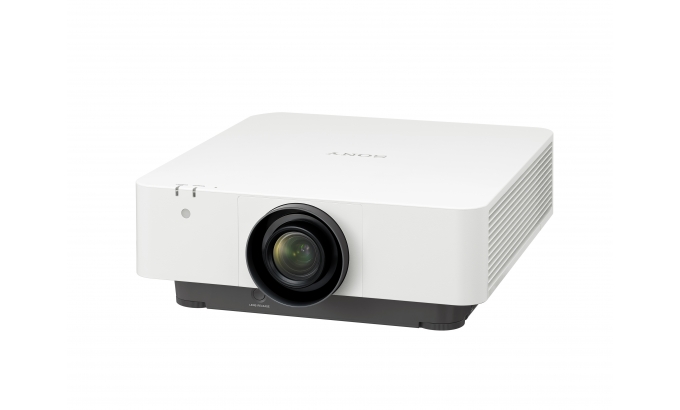
Sony VPL-FHZ85/VPL-FHZ80
As much as I love LEDs, 2022 will be a record year for projection systems. After two years of declines, the projection market is ripe for a record. And, the tech is totally different than it was going into the pandemic. We now have 25-pound 8,000-lumen laser projectors that are readily available. I believe college classrooms, will see a worldwide tech change this summer. Get ready; this will be the best year to sell projectors since 2017. Leading this all will be Sharp NEC, Sony and Epson. Believe me; those three companies will take more than 70% of the commercial AV projection market in 2022.
Supply Chain/Chip Shortage
I’d be remiss to publish a predictions article for 2022 without revisiting the inevitable supply chain/chip shortage issues that will plague our market. We are ripe for an economic comeback as businesses reopen. However, we will not enjoy a full recovery in 2022; none of this will be the fault of the AV salesperson or the customer. The issue will simply be availability. And, “allocation” of raw components will create a situation in which we will see supply shortages and you will not be able to do facility-wide or campus-wide upgrades using the same products. You’ll need to be flexible or you could delay your return economically. My suggestion is to get to know at least one other product in every category you see — have a first, second and third alternative to what you specify or want to use. Otherwise, you could be staging an entire system missing one part — a financial and relationship disaster.

A Word About Interoperability
It doesn’t exist. If you stick with ecosystems, it works. But, in UCC it doesn’t. Teams and Zoom do not play well together and no one wants to play with Google and Meet. No, we do not have interoperability and will not see it in 2022. Your best bet for that in the UCC market will be the Barco ClickShare Conference. That’s it.
With regard to interoperability in AV systems, again, ecosystems rule. SDVoE has it nailed with a 10G AV-over-IP platform. And, Crestron’s NVX for 1Gbps systems. Currently, the only way to have interoperability between 1G and 10G AV-over-IP is to use Extron’s NAV. Heck, even though Kramer has 1G and 10G, its stuff doesn’t even work together — you’ve gotta either go 1G or 10G — no mixing and matching. So, with AV-over-IP, we’ll be in ecosystem mode for 2022 (as the proposed AV-over-IP standard, known as IPMX based on the SMPTE 2110 standard for the broadcast of video over the network, will NOT be adopted in 2022).
Basically, interoperability is a marketing term in AV.
Finally, a Thank You!
I want to take the time to thank all of you for continuing to support rAVe and all that we do. We need readers to make this all work. Just as importantly, the team here at THE rAVe Agency is magical. Like for everyone else, the past two years have been tough for them. The team has faced uncertainty: working from home, the office and hotel rooms. They’ve recorded hundreds of show-floor video interviews in one day while wearing masks. They’ve logged on for the day while sick to make sure the job gets done. We grieved the loss of our 15-year accountant due to COVID-19. Many of us loved her like a mother.
Even though the world is on fire, my team has persevered and produced some of the best work we’ve seen on LAVNCH, STORYTELLING, rAVe [PUBS], podcasts, THE rAVe Agency campaigns and the plethora of news and blogs we publish. Heck, this past week, four of my team had COVID-19 and still chose to work through it. To make it perfectly clear, I LOVE❣️ my team and you should too (love your own team and mine😊).
Enjoy 2022, and please tell anyone you ever see from rAVe “thank you” for what they do to make our business possible. And reader, I thank you, too.
